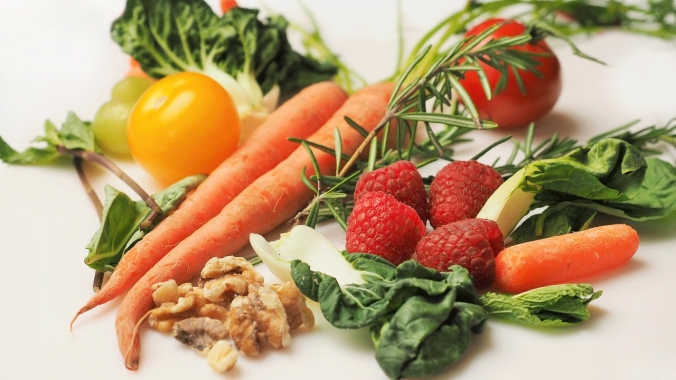I haven’t written in a while.
Like, a long while.
A lot has happened, and I will do my best to summarize and also tell all.
Over the past few months, we got a dog, I started a new job, I started a different elimination diet (today, actually), I turned another year older, we finally went to Yellowstone, and we’ve hosted my parents on several occasions. I’m still managing my pain and fatigue as best I can, and I’ve learned a few new things since I last wrote. I will address the new diet, the pup, Yellowstone, and the job in separate posts, and for now will just focus on my typical days and pain.

Food: the possible solution to my problems. Credit unknown.
My back and pain are still issues everyday, as is my fatigue. That’s the reason I just started the Autoimmune Protocol/Paleo (the name depends on who you ask, but it’s the same thing). When I was coping with the accident and resulting upper back pain this summer, I started seeing an orthopedic masseuse. That’s been a total game changer. My pain and tenderness is from muscle tightness and resulting misalignment and imbalance, so finding someone whose knowledge of the muscular and skeletal systems is so vast has been a blessing. Compared to acupuncture, I think massage has been more beneficial, but I’m sure every person has a different degree of success.
I also saw a genetics specialist at the urging of my holistic doctor. I believe that the particular doctor I saw may work for some people, but for me was just a money pit. She believes that I am impacted by wifi, and so suggested I buy a pendant, special water, and various vitamins from her. I suspended my disbelief and tried it, but I felt no different after drinking the magic water for a week and wearing the pendant for a fortnight. I was skeptical at the end of our session, and I remain so after giving her treatments a shot with no improvement. Isn’t there that saying, “If it seems to good to be true, it probably is”? Yeah, well, I believe this is one of those cases.
The AIP Diet is a more extreme version of the elimination diet. I had mild success with that (my husband swears I was better, but I didn’t actually recognize a marked improvement; if he observed fewer pain episodes and improved mood, then I believe it worked to some extent), and so I think I need to get even more strict to see more results. AIP take the other restrictions (no gluten, white potatoes/breads, sugar, soy, beef, dairy, eggs, caffeine, alcohol) and takes it a few steps further. On top of those foods above, I cannot have nuts, beans/legumes, grains/rice, or nightshade vegetables like peppers and tomatoes. This means that I’m basically down to fruits, vegetables, and meat/fish. This will make for interesting holidays; cassava, coconut, or tiger nut flour for everything, no black pepper for seasoning, no stuffing, and no carbs other than roots and squashes. It’s going to be an interesting ride, but my family is being very supportive.
I will update the blog with more information about AIP, as well as posts about our dog, Rosie (only the best golden retriever ever), running, my job and its new challenges, and Yellowstone.






